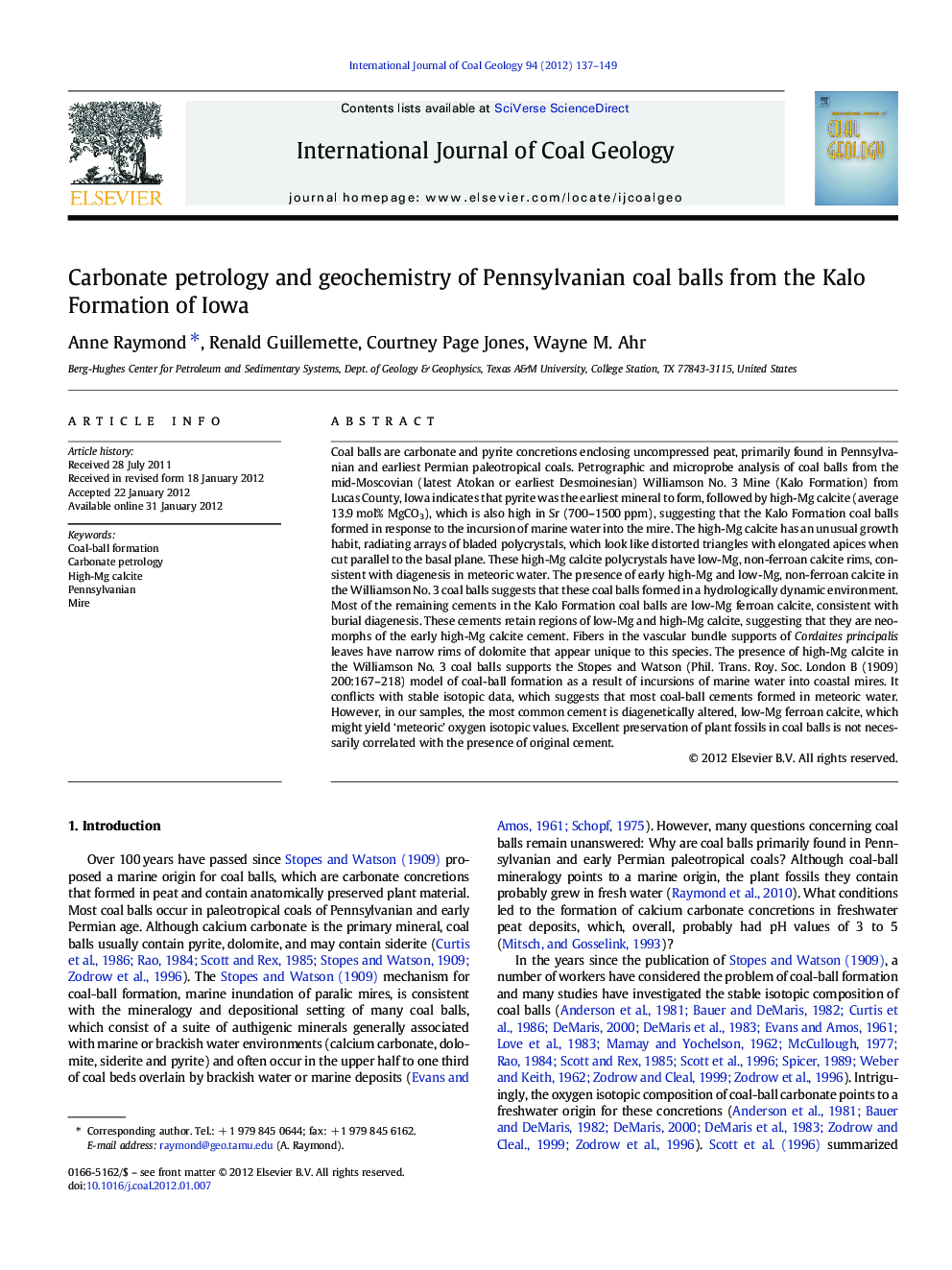| کد مقاله | کد نشریه | سال انتشار | مقاله انگلیسی | نسخه تمام متن |
|---|---|---|---|---|
| 1753649 | 1522599 | 2012 | 13 صفحه PDF | دانلود رایگان |

Coal balls are carbonate and pyrite concretions enclosing uncompressed peat, primarily found in Pennsylvanian and earliest Permian paleotropical coals. Petrographic and microprobe analysis of coal balls from the mid-Moscovian (latest Atokan or earliest Desmoinesian) Williamson No. 3 Mine (Kalo Formation) from Lucas County, Iowa indicates that pyrite was the earliest mineral to form, followed by high-Mg calcite (average 13.9 mol% MgCO3), which is also high in Sr (700–1500 ppm), suggesting that the Kalo Formation coal balls formed in response to the incursion of marine water into the mire. The high-Mg calcite has an unusual growth habit, radiating arrays of bladed polycrystals, which look like distorted triangles with elongated apices when cut parallel to the basal plane. These high-Mg calcite polycrystals have low-Mg, non-ferroan calcite rims, consistent with diagenesis in meteoric water. The presence of early high-Mg and low-Mg, non-ferroan calcite in the Williamson No. 3 coal balls suggests that these coal balls formed in a hydrologically dynamic environment. Most of the remaining cements in the Kalo Formation coal balls are low-Mg ferroan calcite, consistent with burial diagenesis. These cements retain regions of low-Mg and high-Mg calcite, suggesting that they are neomorphs of the early high-Mg calcite cement. Fibers in the vascular bundle supports of Cordaites principalis leaves have narrow rims of dolomite that appear unique to this species. The presence of high-Mg calcite in the Williamson No. 3 coal balls supports the Stopes and Watson (Phil. Trans. Roy. Soc. London B (1909) 200:167–218) model of coal-ball formation as a result of incursions of marine water into coastal mires. It conflicts with stable isotopic data, which suggests that most coal-ball cements formed in meteoric water. However, in our samples, the most common cement is diagenetically altered, low-Mg ferroan calcite, which might yield ‘meteoric’ oxygen isotopic values. Excellent preservation of plant fossils in coal balls is not necessarily correlated with the presence of original cement.
► The earliest cement in coal balls from the Kalo Fm. is marine, high-Mg calcite.
► Early diagenetic pyrite and high-Mg calcite indicate a marine origin for coal balls.
► Coal balls with meteoric and marine calcite formed in hydrologically dynamic mires.
► Burial diagenesis has altered most coal-ball calcite to low-Mg, ferroan calcite.
► Diagenetically altered coal-ball cements may not retain original isotopic values.
Journal: International Journal of Coal Geology - Volume 94, 1 May 2012, Pages 137–149